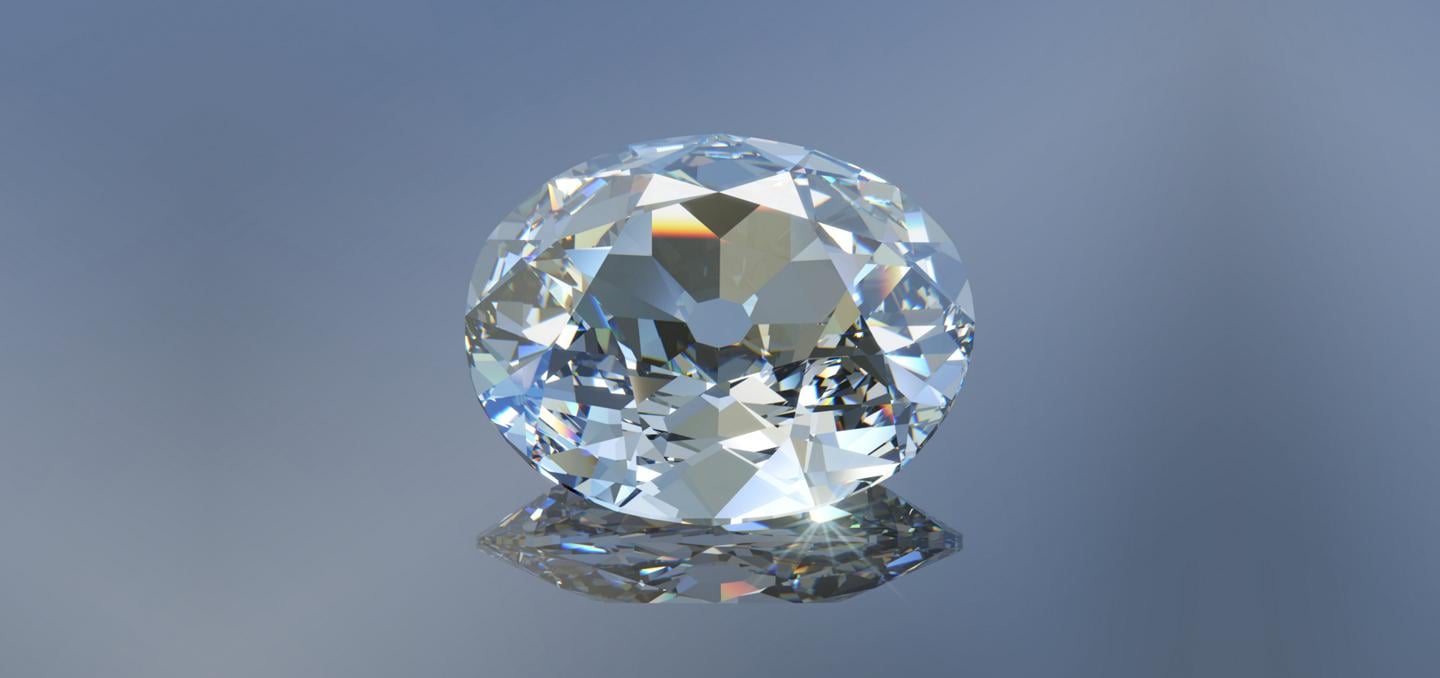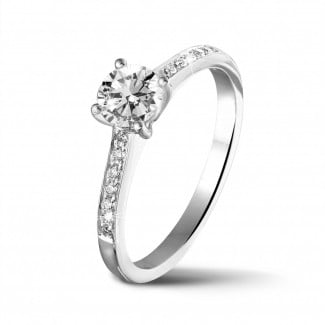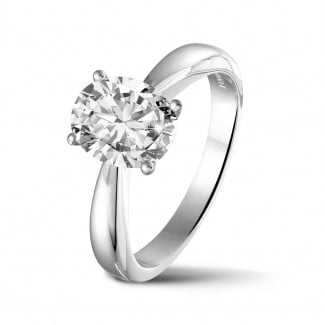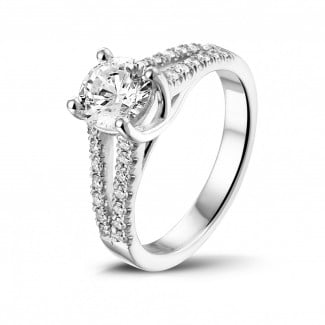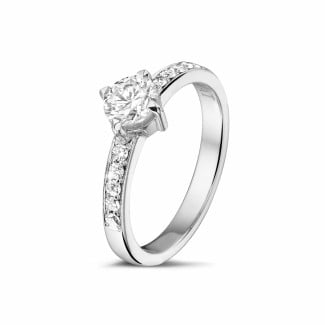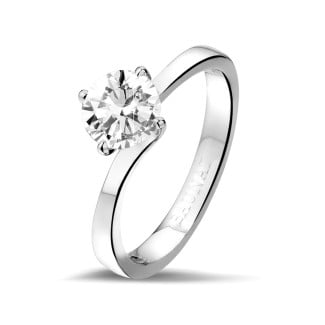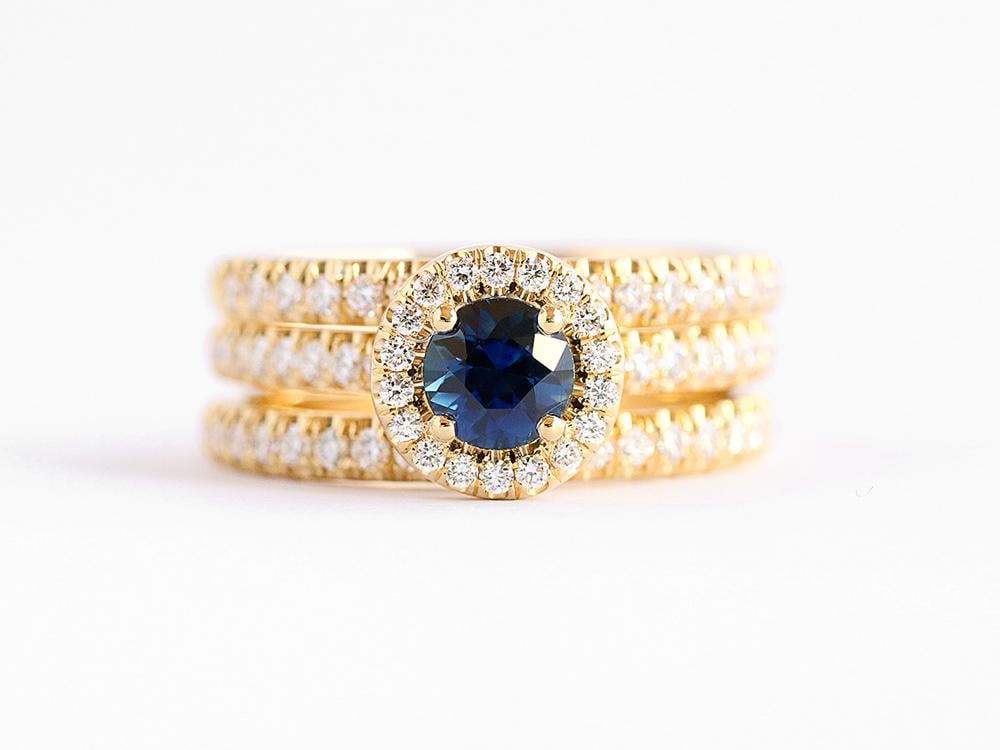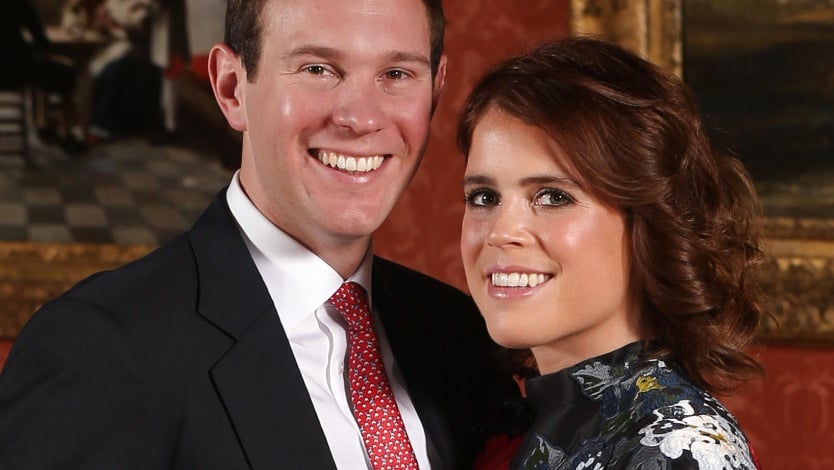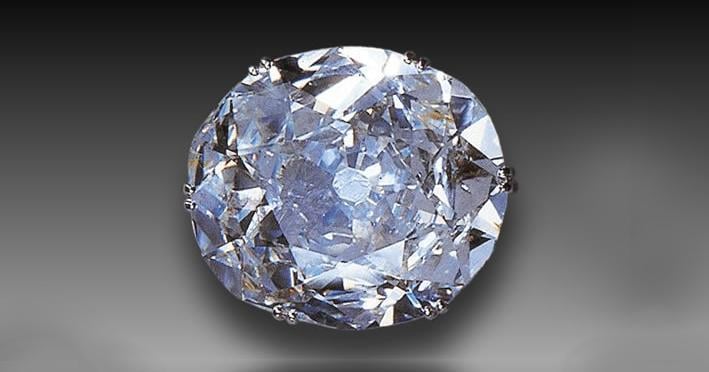Inspirational insights
Blogs in the spotlight
- How do I buy the perfect diamond ring?
- Choosing the perfect wedding ring
- Buying an engagement ring: expert tips & tricks
- Which earrings are the right ones for you?
- How to choose the perfect diamond bracelet?
- How to choose a necklace for ladies?
- Take your time in choosing your watch
- What's the right jewellery for each occasion?
- Why buy diamond jewellery online?
- A guide to building up your jewellery collection
- What types of precious metals are there?
- What types of precious metals are there?
- Jewellery trends and innovations in 2020
- What sorts of diamond setting are there?
E-commerce means diamonds are now within everyone's grasp. Only the so-called super diamonds are reserved for the lucky few. The Koh-i-Noor diamond, which was set in Queen Elizabeth's crown, belongs in this category. With a worth of at least €140 million, the Koh-i-Noor diamond is of inestimable value.
You might be wondering where the Koh-i-Noor diamond is now; this gorgeous diamond is housed in the Tower of London, but is a point of contention, with the governments of India, Pakistan, Iran and Afghanistan claiming ownership of it since India’s independence from the UK in 1947.
- What is the Koh-i-Noor diamond?
- Where did the Koh-i-Noor diamond originate?
- How did this super diamond end up in British hands?
- The mythical powers of the Koh-i-Noor diamond
- How much is the Koh-i-Noor diamond worth?
Browse BAUNAT's extensive range of exclusive jewellery.
Most viewed diamond jewels
What is the Koh-i-Noor diamant?
Where did the Koh-i-Noor diamond originate from?
Upon noticing the unique precious stone in the turban, Persian commander Nadir Sjah cried 'Koh-i-Noor', or 'mountain of light'.

The mythical powers of the Koh-i-Noor diamond

The Koh-I-Noor’s value isn’t exactly known, but it is estimated to be worth €140 to €400 million. It is one of the most important diamonds in the world and is a part of the United Kingdom’s Crown Jewels. The Koh-I-Noor’s diamond has a total weight of 109 carats.
Originally, the Koh-I-Noor’s weighed 186 carats. The queen was dissatisfied with the stone's luster and had it recut to in 1852 by renowned Coster Diamonds in Amsterdam. It is on display, along with the other British Crown Jewels, at the Tower of London, where the renowned Cullinan diamonds are also exhibited.
Frequently asked Questions
Where does the origin of diamonds lie?
The origins of the diamond, as well as its many connotations, lies in India where it was first mined. The word most generally used for diamond in Sanskrit is transliterated as vajra, "thunderbolt" and indrayudha or "Indra's weapon." As Indra is the warrior god of Vedic scriptures (the foundation of Hinduism, the symbol of the thunderbolt tells a lot about the Indian conception of diamonds. The flash of lightning reminds of the light that is reflected by a fine diamond octahedron and a diamond's indomitable hardness.
What is the romantic history of diamonds?
The diamond is used in many pieces of exquisite jewellery and comes in various sizes. It is, however, in its smallest form that it catches our interest the most: the diamond ring given in token of love and marriage. The actual history of this tradition transcends the perception of its creation as marketing hyperbole. The modern solitaire is just the most recent step on a long road from the past.
Rings date back several millennia, but those that are given as a token of love are first noted by the comic Roman poet Plautus in the 2nd century BCE. In those times, wedding rings were known for their interior inscriptions that recorded the marriage contracts signed in the presence of the Emperor's image. This custom was continued and Christianized by the 4th century, when priests would not permit weddings anymore without the exchange of rings.
What are famous diamonds?
The world’s most famous diamonds are the 45-carat Hope Diamond (and its famous Curse), the mystical Koh-I-Noor Diamond and the 546 carat Golden Jubilee.
The Bokassa Diamond is surrounded by a truly fascinating story. In 1977, a Central African dictator named Jean-Bédel Bokassa declared himself emperor and asked Albert Jolis, the president of a diamond mining operation, for a diamond ring.
Jolis did not have the money to buy such a large stone, however, if he did not deliver one, his company would lose the mining concession in Central Africa. And so he devised a clever solution: Jolis found a large piece of black diamond bolt (a poorly crystalized diamond usually fit only to be crushed into abrasive powder) that curiously resembled Africa in shape. He ordered for the diamond to be polished and mounted on a large ring. A one-quarter carat white diamond was then set roughly where the country is located on the continent.
Jolis presented this "unique" diamond to the clueless Bokassa, who loved it. He thought that the $500 ring was worth over $500,000.

Stephanie Hesters
- BAUNAT Antwerp
- My Linkedin profile - Contact me
 Design collections
Design collections Stackable Rings
Stackable Rings Ruby, sapphire & emerald
Ruby, sapphire & emerald Bestsellers
Bestsellers New arrivals
New arrivals Watches
Watches Cufflinks
Cufflinks Rings for men
Rings for men Diamond
Diamond Sapphire
Sapphire Ruby
Ruby Emerald
Emerald Yellow diamond
Yellow diamond Black diamond
Black diamond
 Diamond rings
Diamond rings Sapphire rings
Sapphire rings Ruby rings
Ruby rings Emerald rings
Emerald rings Yellow diamond rings
Yellow diamond rings Black diamond rings
Black diamond rings
 Stackable rings
Stackable rings Cocktail rings
Cocktail rings Rings for men
Rings for men Bestsellers
Bestsellers Diamond rings
Diamond rings Sapphire rings
Sapphire rings Ruby rings
Ruby rings Emerald rings
Emerald rings Yellow diamond rings
Yellow diamond rings Black diamond rings
Black diamond rings
 Solitaire
Solitaire Dangle
Dangle Diamond earrings
Diamond earrings Sapphire earrings
Sapphire earrings Yellow diamond earrings
Yellow diamond earrings Black diamond earrings
Black diamond earrings
 Solitaire
Solitaire 3 stones
3 stones Halo
Halo Gradient
Gradient Diamond necklaces
Diamond necklaces Sapphire necklaces
Sapphire necklaces Yellow diamond necklaces
Yellow diamond necklaces Black diamond necklaces
Black diamond necklaces
 Gradient
Gradient White gold
White gold Yellow gold
Yellow gold Red gold
Red gold Platinum
Platinum Diamond bracelets
Diamond bracelets Yellow diamond bracelets
Yellow diamond bracelets Black diamond bracelets
Black diamond bracelets
 View watches
View watches View watches
View watches Swiss Made
Swiss Made Swiss Collection limited edition
Swiss Collection limited edition Manufacturing process
Manufacturing process Manual or Automatic watch
Manual or Automatic watch Sapphire or mineral glass
Sapphire or mineral glass
 Rings
Rings Necklaces
Necklaces Bracelets
Bracelets Sapphire
Sapphire
 Engagement rings
Engagement rings Earrings
Earrings Necklaces
Necklaces Bracelets
Bracelets
